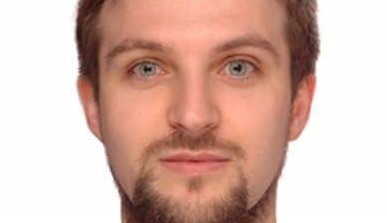Glenn Hitchman is a psychologist and parapsychologist based at the University of Northampton. His research has focused on implicit precognition, morphic fields and the use of floatation tanks to induce psi-conducive states.
Contents
Career
Glenn Hitchman gained a first-class degree in economics from the University of Surrey. He then switched to psychology, obtaining a MSc with distinction from the University of Hertfordshire before completing his PhD at the University of Northampton. Following several successful academic appointments, including two years in China, Hitchman returned to the University of Northampton in 2017, where he is now employed as a senior lecturer and deputy subject leader in psychology.
Hitchman has been involved in a wide variety of collaborative research projects; however, his main specialisms are in parapsychology and individual differences. He currently leads the Exceptional Experiences and Consciousness Studies research group in the University of Northampton’s Centre for Psychology and Social Sciences. His recent work has expanded to include comprehensive meta-analytical reviews examining participant selection criteria for enhanced psi performance, particularly in ganzfeld studies.1Hitchman et al. (2023).
Non-intentional Precognition
Much of Hitchman’s psi work has focused on implicit non-intentional precognition, where unconscious drives influence performance on psi tasks. One study investigated how latent inhibition (ability to filter out irrelevant extraneous stimuli) may predict an individual’s sensitivity to psi stimuli.Fifty participants completed auditory discrimination tests to measure their latent inhibition, along with binary precognition tests camouflaged as non-psi tasks. The experiment narrowly failed to reach statistical significance (p = 0.06), but the effect size (0.23) was close to that found in similar work. It was also found that latent inhibition was unrelated to precognition performance.2Hitchman et al. (2012).
In another study, a similar non-intentional psi task found a small non-significant psi effect overall; however, there significant correlations were observed between relaxation, perceptions of positive interactions with the experimenter and psi performance.3Hitchman et al. (2014).
Floatation Tanks
The noise reduction model has been extensively used in parapsychology, notably in ganzfeld telepathy experiments, where sensory stimulation is reduced to a minimum with the intention of creating a psi-conducive inner mental state. Hitchman and colleagues have investigated the use of floatation tanks as an alternative approach for this purpose. Floatation tanks have been used since the 1950s to as a means to induce profound changes in consciousness, but have hitherto been neglected by parapsychologists.
Hitchman took part in a pilot study in which colleagues David Saunders and Callum Cooper acted as ‘sender’ and ‘receiver’ respectively, while he acted as independent judge. Twelve trials were carried out, incorporating video clips as target material. After each session Cooper attempted to judge his own mentations against the target and decoy clips in a blinded fashion. At the conclusion of the experiment the reports were handed to Hitchman who tried to match them to the targets. Both receiver and judge scored well within chance. However, the main goal was achieved, to learning about the practicalities of such an approach, while several high-quality qualitative correspondences provided motivation for a larger study.4Cooper et al. (2019).
Building on this foundational work, Hitchman has continued to explore enhanced participant selection methods, working with colleagues Adam Rock and Chris Roe to systematically examine how individual difference factors might optimize ganzfeld study outcomes.5Hitchman et al. (2023).
Ganzfeld Meta-Analysis
Hitchman is working with colleagues Adam Rock and Chris Roe to explore how ganzfeld study success can be enhanced by pre-selecting participants with specific characteristics. His meta-analysis of 49 experiments investigated factors such as extraversion, transliminality, creativity, and paranormal belief, finding that while some factors show small but statistically significant associations with performance, overall effect sizes remain modest, with extraversion showing the strongest association.6Hitchman et al. (2023).
Morphic Fields
Hitchman and Roe carried out a failed attempt7Hitchman & Roe (2011). to replicate an earlier successful experiment by Robbins and Roe8Robbins & Roe (2010). testing Sheldrake’s theory of morphic resonance (in which patterns of behaviour are shared by members of a group or species through a shared morphic field). In this study, 101 participants were exposed to eight genuine Chinese characters and eight imitative characters in a randomized order, and then identified any characters they could remember in a sheet consisting of those symbols among a number of decoys. Overall, the participants failed to recognize more of the genuine than false characters. A third study presented by Chris Roe at the 65th Annual Convention of the Parapsychological Association in Oslo also failed to give experimental support to the morphic field hypothesis, with results close to chance.9Hitchman et al. (2023b).
Michael Duggan
Literature
Cooper, C., Saunders, D., & Hitchman, G. (2020). Reconsidering sensory isolation in floatation tanks as a method of promoting psi-conducive imagery. Journal of the Society for Psychical Research, 84/1, 1-19.
Hitchman, G., Rock, A., & Roe, C.A.. (2023). Meta-analysis findings presented at the 45th Annual Conference of the Society for Psychical Research.
Hitchman, G., Roe, C.A., & Patton, D. (2023b). Revisiting Sheldrake’s Theory of Morphic Resonance. Proceedings of the 65th Annual Convention of the Parapsychological Association. Fanehallen, Oslo, Norway.
Hitchman, G., Roe, C.A., & Sherwood, S. (2012). A reexamination of nonintentional precognition with openness to experience, creativity, psi beliefs, and luck beliefs as predictors of success. Journal of Parapsychology 76, 109-45.
Hitchman, G., Sherwood, S., & Roe, C.A. (2014). The relationship between latent inhibition and performance at a non-intentional precognition task. Explore: The Journal of Science and Healing 11/2, 118-26.
Robbins, K., & Roe, C.A. (2010). An empirical test of the theory of morphic resonance by using recognition for Chinese symbols. Explore: The Journal of Science and Healing 6, 256-62.
Roe, C.A., & Hitchman, G. (2011). Testing the theory of morphic resonance using recognition for Chinese symbols: A failure to replicate. Journal of the Society for Psychical Research, 75, 211-24.
